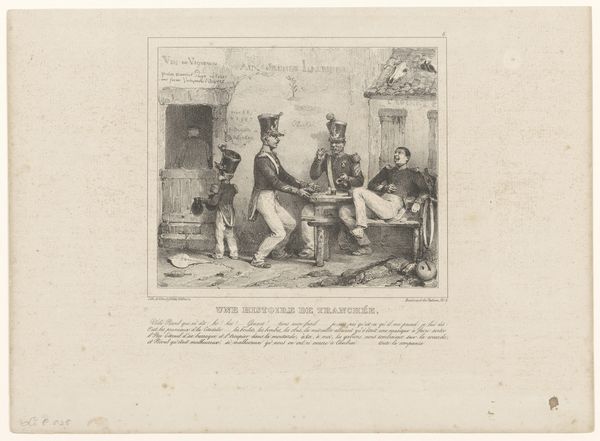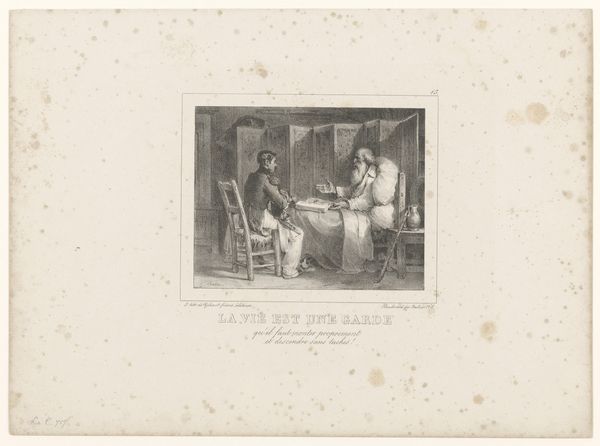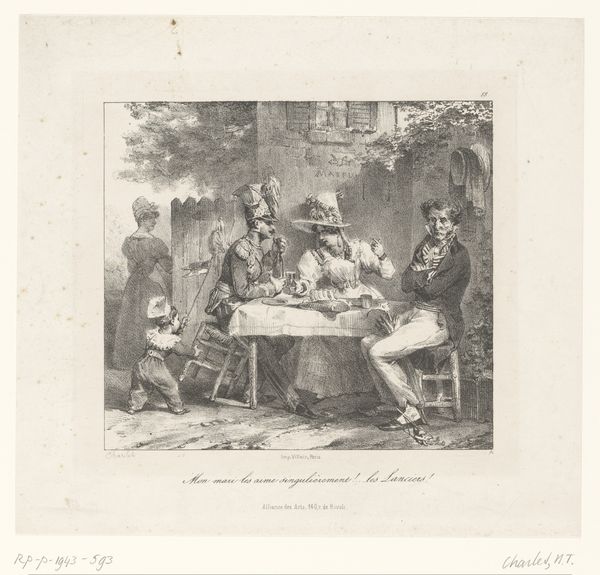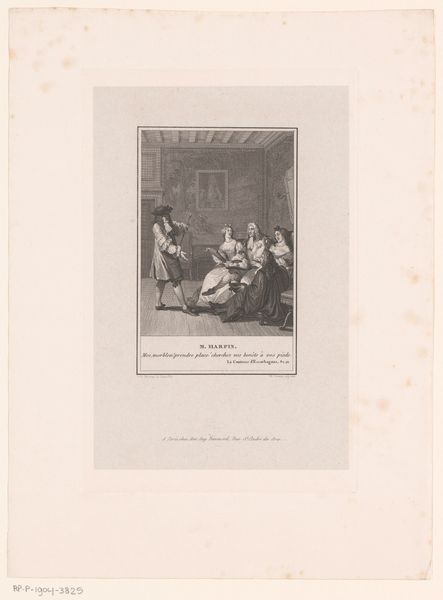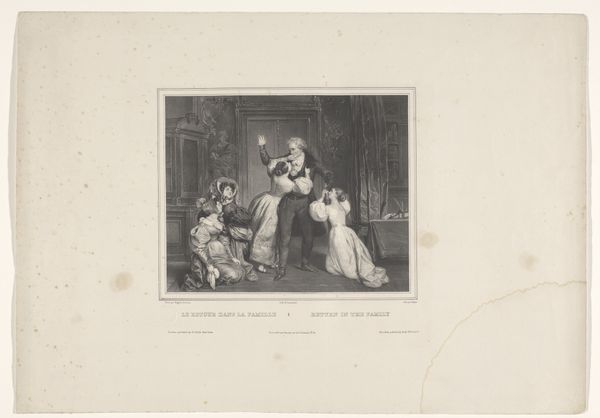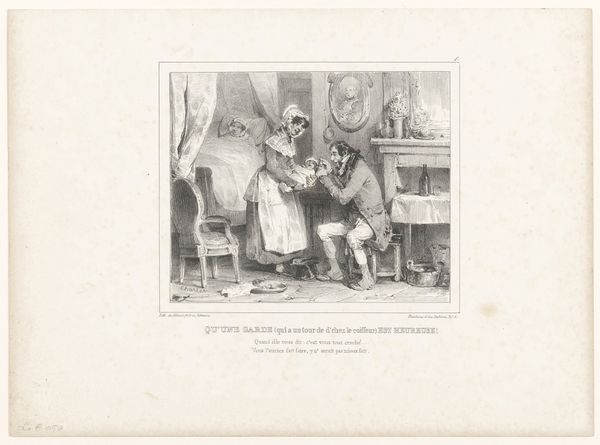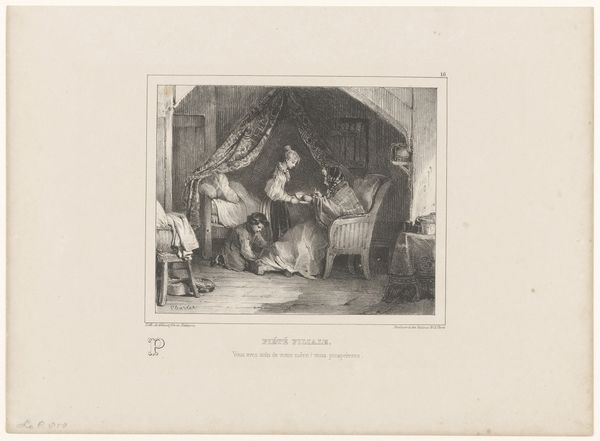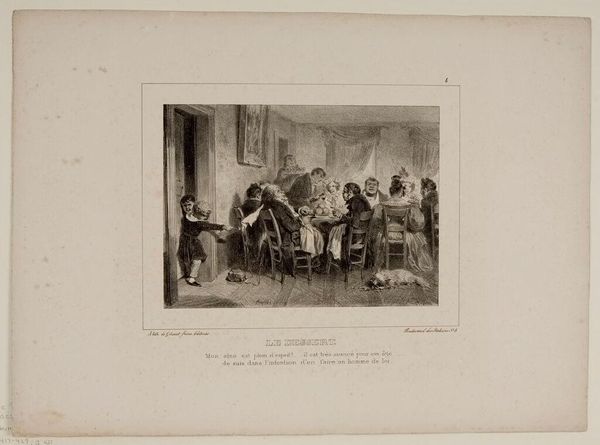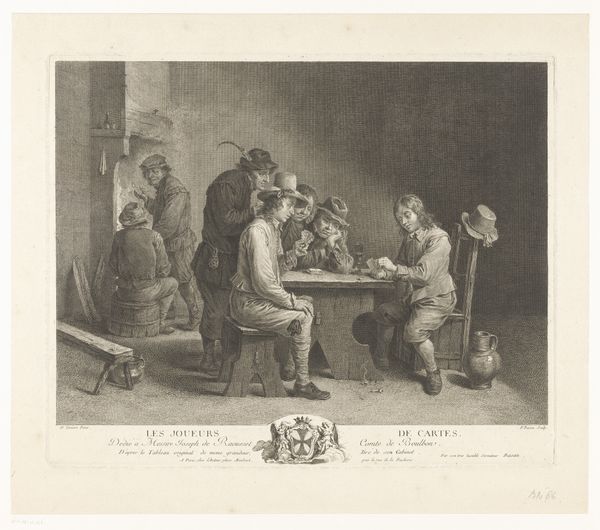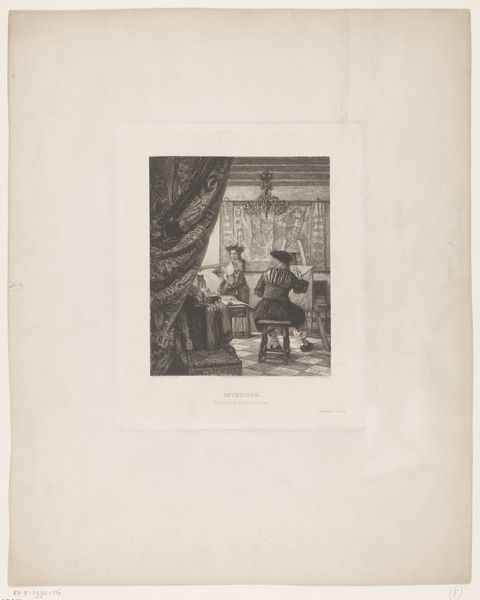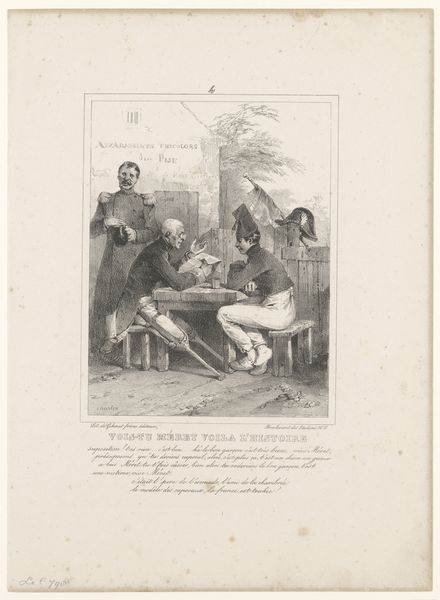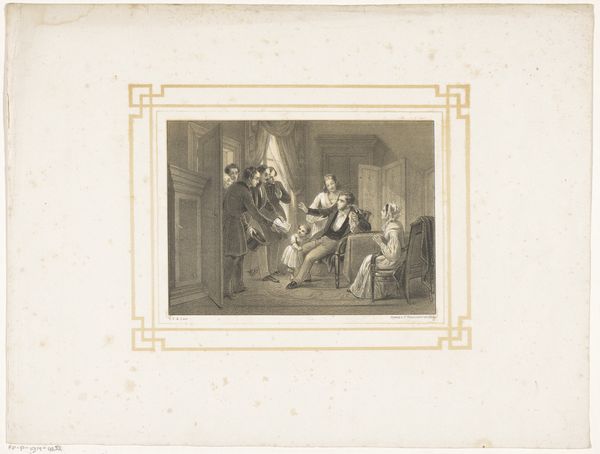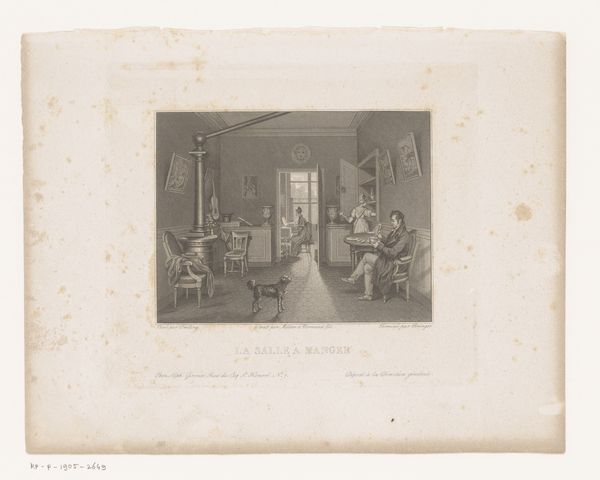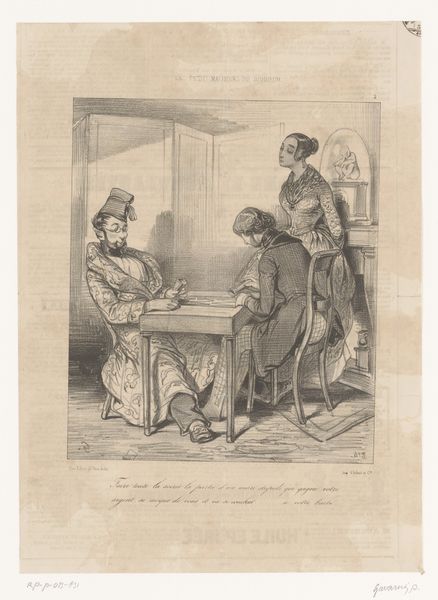
drawing, lithograph, print, paper
#
portrait
#
drawing
#
lithograph
# print
#
paper
#
romanticism
#
genre-painting
#
monochrome
Dimensions: height 247 mm, width 338 mm
Copyright: Rijks Museum: Open Domain
Curator: This lithograph, “Old Man Quoting Napoleon From A Book” by Nicolas Toussaint Charlet, made in 1832, certainly captures a moment in time. What stands out to you about it? Editor: The scene feels so intimate, like a snapshot of everyday life. It depicts several characters sitting around in what seems to be the living room, all surrounding an old man who is reciting, perhaps with great emphasis judging by the way he holds the book. What's striking is the artist's focus on the people and their shared moment, almost as if the goal was to depict a stageplay. What can you tell me about this piece, in a more theoretical way? Curator: Charlet's work often explores themes of nostalgia and the lingering impact of the Napoleonic era, very much aligned with romanticism of the era. It subtly critiques the glorification of war, by presenting Napoleon through the lens of a common man’s nostalgic recollection. We can look at this lithograph as part of a broader dialogue of class and power. In 19th-century France, the figure of Napoleon was laden with sociopolitical charge: who do you think benefits from perpetuating this myth? Editor: That's a good point. Perhaps Charlet is challenging us to consider who gets to write history and whose voices are amplified. So the "common man," in Charlet’s depiction, becomes a vessel through which ideas are disseminated. Curator: Precisely. He is the very mouthpiece of ideology. Consider the way the image itself, the lithograph, makes it easily reproducible: consider it a medium for propaganda avant la lettre. Editor: I never considered that the medium of lithography was used in such a calculated manner. Thanks, this really broadened my understanding! Curator: Absolutely. And I've benefitted from considering new, diverse interpretation on the narrative’s emphasis, particularly regarding common agency, by focusing less on what’s said than by whom it’s spoken.
Comments
No comments
Be the first to comment and join the conversation on the ultimate creative platform.
